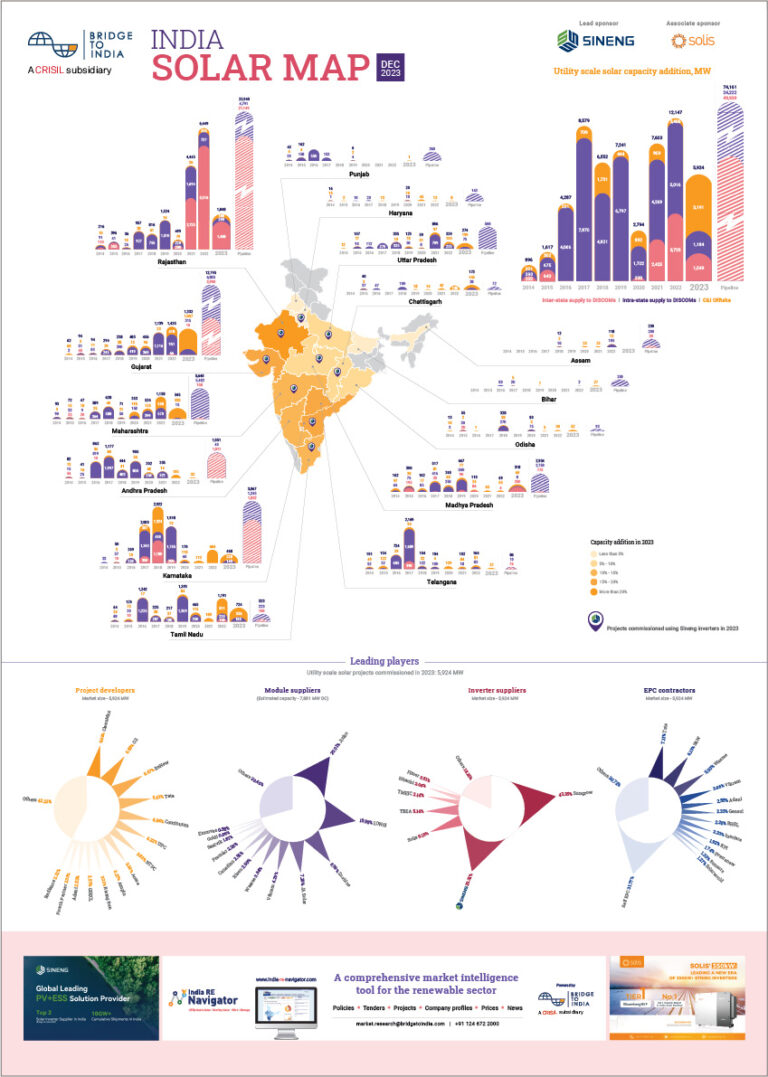SECI has made several amendments to its RFS for the integrated project development and module manufacturing tender. The big change is reduction in manufacturing capacity from 5 GW to 3 GW. MNRE received strong representations from the private sector with most companies not happy with the integrated tender design or with the ratio of project development and manufacturing capacity. Accordingly, focus on manufacturing has been reduced – revised minimum bid size is 2 GW of project development capacity combined with 600 MW of module manufacturing capacity.
- The tender conditions are highly restrictive and complex;
- Although there is no operational links between manufacturing and project development aspects, there are cross-penalties for delays and/ or underperformance;
- We believe that this is the wrong formula for supporting domestic manufacturing;
Unfortunately, not all changes are positive. Ceiling tariff has been revised downwards to INR 2.75 (US 3.9 cents). The manufacturing capacity still needs to be fully integrated from polysilicon onwards but is required to be fully operational within 2 years as against 3 years under the original RFS. The requirement to locally source all major raw materials, other than polysilicon, has been relaxed but new restrictions have been included for capacity utilisation (50-60% in the first two years) and technology (module efficiency must be minimum 19-20%). Time period for development of project capacity has also been reduced from 4 years to 3 years – 40% capacity should be operational within 21 months and balance 60% should be operational in another 15 months.
Overall, it remains a peculiarly designed tender with a very complex structure. Although there is no operational connection between manufacturing and project development, there are cross-penalties for delays and/or underperformance.
The rationale for the peculiar tender design is that developers can, in theory, bid extra tariff on generation to subsidise their investment in the relatively unattractive manufacturing business. But that logic is defeated by the government’s general unwillingness to accept higher tariffs.
Moreover, few players have the willingness and capacity to participate in a tender of this scale/ complexity. Other concerns for potential bidders include large minimum investment of about INR 90 billion (USD 1.3 billion), aggressive time scale for implementation and weak market outlook for module manufacturing business. Several developers and module manufacturers are exploring joint-venture possibilities but the challenges are still formidable.
It is difficult to see how proposed revisions would attract enough bidding interest. We believe that the government is tying itself into knots and a solution to promote domestic manufacturing remains way off. Another pre-bid meeting is scheduled for September and we suspect more revisions are in store.












